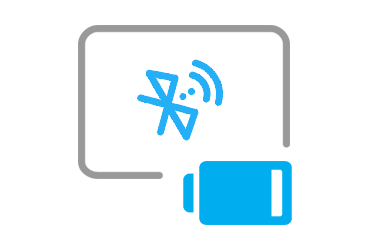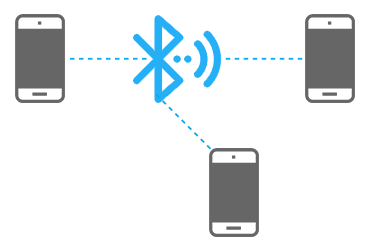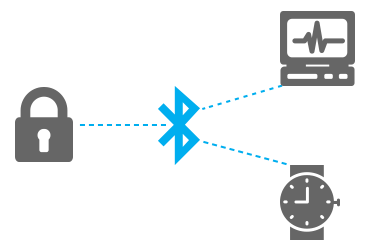
Bluetooth Low Energy (BLE, aka Bluetooth Smart) is a power-conserving variant of Bluetooth Personal Area Network (PAN) technology. As compared to Classic Bluetooth, Bluetooth Smart is meant to provide low power consumption and reduced cost. BLE uses wireless technology in the 2.4 GHz unlicensed radio band to connect to nearby devices.
In 2006, Nokia introduced Bluetooth Smart by the name Wibree. It was later on in 2010, the Bluetooth Special Interest Group (SIG) adopted the technology and merged it within the standard Bluetooth Core Specification version 4.0. BLE works on almost the same principles as Standard Bluetooth but consumes very low power for communication.


BLE consists of 2 roles –Peripheral (Slave) &Central (Master). A Peripheral device advertises, to let other devices know of its presence while the Central device sends a connection request to establish a connection.BLE uses two additional terms to describe the connecting entities: Server - the device that has information to share, that is typically the peripheral; Client - the device that seeks information and services, that is typically the central device - the phone.
Heart Rate Monitors, Locks, Smart watches, Wearable gadgets are good examples of BLE solutions.The opportunities presented by this technology are huge & endless and innovative things are being built around it every other day.


Whether you are a Startup or an Enterprise, our Team will help you employ BLE technology thereby converting your ‘Devices’ to ‘Smart Devices’. Within a very short span of time, we have grown as a specialized BLE app development company and have developed BLE powered mobile apps in various domains.
Frequently Asked Questions (FAQs)
BLE means Bluetooth Low Energy. It is a wireless Bluetooth technology designed for high speed and low power consumption. It connects with devices such as phones, tablets, and other portable types of equipment with a built-in Bluetooth facility over a specific proximity range.
No, beacons only transmit their UID (Unique Identification) code. The smartphone or any other receiving device in which the application is running (even in the background) fetches this ID and then displays the relevant data to the user.
Proximity sensors, heart rate monitors, and many fitness devices operate on BLE. They consume low energy and have inbuilt apps that get triggered with Bluetooth.
The maximum range that the BLE device can reach is 300 feet or 100 meters. But the challenge is that external conditions such as interferences, natural occurrences may not be favorable. It can limit the performance to even 10-20 meters.
BLE operates in the same spectrum range as Bluetooth and hence finds in application in many home entertainment, security, beacons, health care, sports and fitness devices, and many more.
A peripheral mode lets peripheral devices know of its whereabouts by which any advertisements reach them. The central mode sends a request to the peripheral device and then passes on the data.
